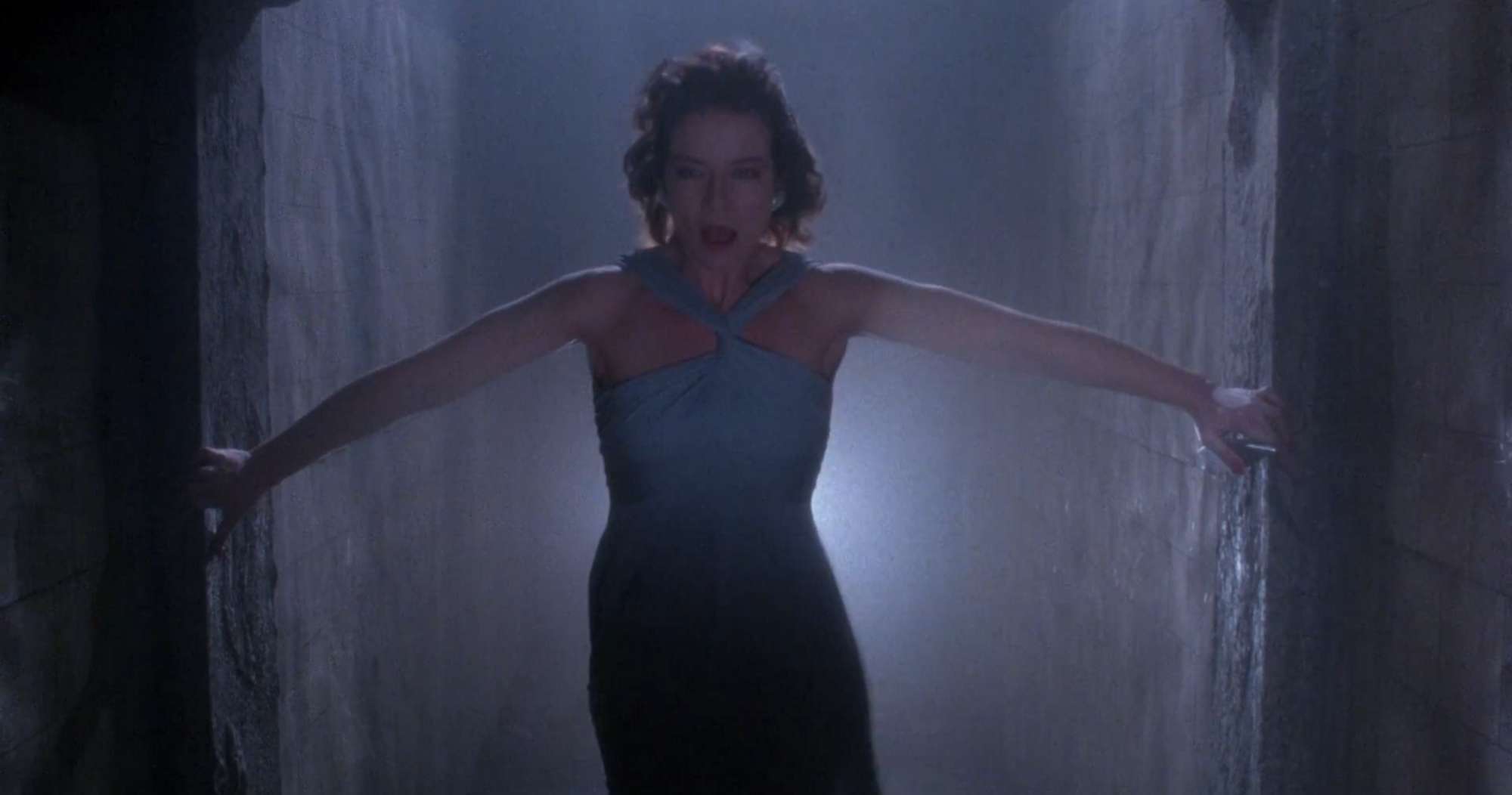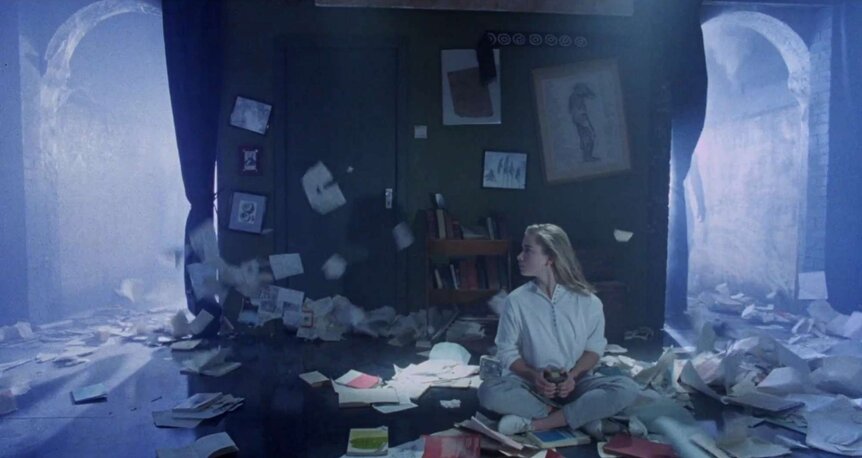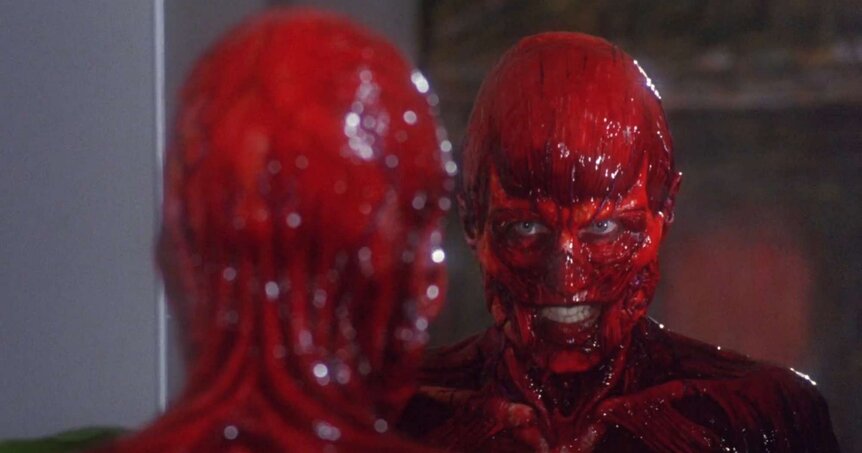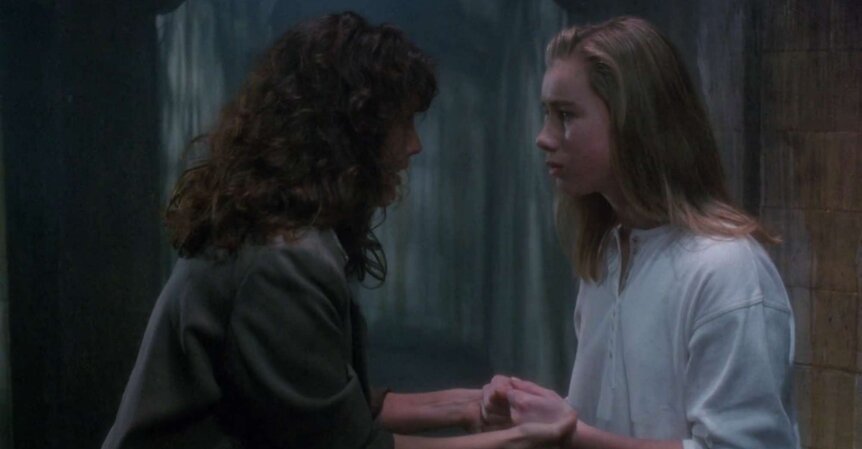Create a free profile to get unlimited access to exclusive videos, sweepstakes, and more!
Not Guilty: Hellbound: Hellraiser II

In Not Guilty, we look at movies and TV shows that the general consensus tells us we should feel bad for liking, but that our hearts tell us we should give a second look — "guilty pleasures" we don't feel guilty about. This time around, your suffering will be legendary... even in Hellbound: Hellraiser II!
The original Hellraiser is considered one of the greatest horror films of all time, and with good reason. This is one of the most successful novel-to-film adaptations in Hollywood history, both financially and creatively. It was directed by the novel's original writer Clive Barker, which allowed for a consistent vision from book to movie. Hellraiser's villains — the demonic, desire-driven Cenobites — immediately solidified a legacy as the most recognizable movie monsters ever to exist. Without even trying, Hellraiser broke so much new ground, from its story to its special effects to its genuine scares, that it's hard to imagine the horror landscape of the last four decades without its incredible influence on the genre.
Then… there are the Hellraiser sequels, which have been slightly less well-received. For the most part, this is fair. Barker quickly walked away from the franchise, and sequels almost immediately lost the highly original premise in favor of mimicking other popular franchises. The resulting films tend to be standard B-movies with some Cenobites wedged in for good measure. Yet, this is not true of all of them. Hellraiser II managed to bring us a continuation of the original film that delivered all the scares, and even upped the ante by dragging series protagonist Kirsty Cotton straight into Hell.
Kirsty finds herself in a state-sponsored institution at the opening of Hellraiser II, very soon after the events of the first film. In Hellraiser, her stepmother Julia had an illicit affair with her Uncle Frank — who had previously discovered the Lament Configuration, a puzzle box that promises to grant its opener access to all their most terrible desires. As a result, Frank found himself in Hell, a plaything of the Cenobites, who are "demons to some... angels to others." Rising up out of blood spilled in the attic one day, skinless and monstrous, Frank pleads with Julia to bring him victims so that he might reform his body... and she does.
Kirsty's father was quite literally ripped to pieces in the first film and the Cenobites took both Frank and Julia, but the doctors don't believe her when she tells them this occurred. She is held under supervision after being deemed a danger to herself and others. However, there is immediately something off about the place in which she is being kept. The head doctor, Channard, is obsessed with Lament Configurations, and secretly believes Kirsty's story. He raises Julia from the dead much in the same way Frank had returned, the two of them force a young girl with a penchant for solving puzzles named Tiffany to open the box, and the Cenobites spring forth, pulling the institution into Hell.
Kirsty tries to find her father, but only succeeds in finding Frank. After he is dealt with and she engages in another fight against Julia, she and Tiffany must find their way out of Hell. After being betrayed by Julia, Channard transformed into the vessel of Leviathan and made his move to conquer Hell. The Cenobites, reminded of their humanity, fall before him, and Kirsty and Tiffany barely escape with their lives.
Hellbound: Hellraiser II is a visceral, disturbing movie, and it might be even gorier than the first Hellraiser, which is saying a lot. The images of medical torture alone are beyond disturbing, and surreal scenes in which Julia casually strolls through a luxurious white room without any skin are sure to stay with viewers long after the movie ends. The first film was defined by its body horror, but the sequel goes even harder on that front. The result is a painful-to-watch, deeply upsetting jaunt into Hell.
Yet, that isn't all there is to this story. Kirsty Cotton's journey continues, and she becomes even more interesting than she was in the first movie. She is haunted by the dreams of her father in Hell, and without a thought, she decides to find a way to follow him. Ultimately, the path to Hell finds her and not the other way around, but she walks bravely in only to realize the visions were a manipulation from her nefarious Uncle Frank. When Frank tries to hurt her, Julia finds them and rips out Frank's heart. Though the central conflict between Julia and Kirsty tends to get lost in the shuffle, it's still interesting to see them encounter each other once more.
Besides that, Kirsty also meets up with the young girl Tiffany, whose mother was murdered via medical torture. Tiffany stopped speaking entirely and began focusing on puzzles, which is why she almost immediately unlocked the Lament Configuration and brought the institution to Hell. Kirsty helps Tiffany and guides her, refusing to leave the child even when it looks like she herself might be trapped for eternity for staying behind. The bond between them is strangely endearing, and even after they escape, the two of them remain friends.
Kirsty is such an interesting horror protagonist because she does so much thinking on her feet. When confronted with the literal hordes of Hell, her impulse is to negotiate a deal with them that will allow her to walk free. She's deeply loyal to those she loves and doesn't think twice about following them into Hell. She recognizes how much she needs allies, coming to Tiffany's aid even though she doesn't have to. When most people look at the Cenobites and feel nothing but terror, Kirsty sees humans whose lives led them to this horrible fate, and she uses that to bait them. Kirsty is great in the first film, but here, she achieves true icon status.
Years later, when Clive Barker returned to Hellraiser via the BOOM! comic series, he continued the arc not from the first film but from the end of Hellbound. Tiffany becomes a prominent character who chases down Lament Configurations with the intent to destroy them, Kirsty's feud with the Cenobites is linked to what she learns of them here, and the humanization of these monsters becomes the central theme of the series.
Overall, Hellbound doesn't offer much in the way of a cohesive plot, and the screenplay takes its viewers in a lot of different directions, but it's hardly the first film to try and pack too many plot threads into too little space. On the other hand, the continuation of Kirsty's story, the introduction of new characters, and the interest in the Cenobites' backstories have gone on to define much of the franchise's overall focus. Though the first Hellraiser is an undeniable classic, Hellraiser II doesn't stray too far from its premise and it gives us a lot of the canonical franchise lore. Though much of it unfortunately never gets followed up outside of the comics, the setup is there, and that's part of what makes Hellraiser II such a great sequel.





























